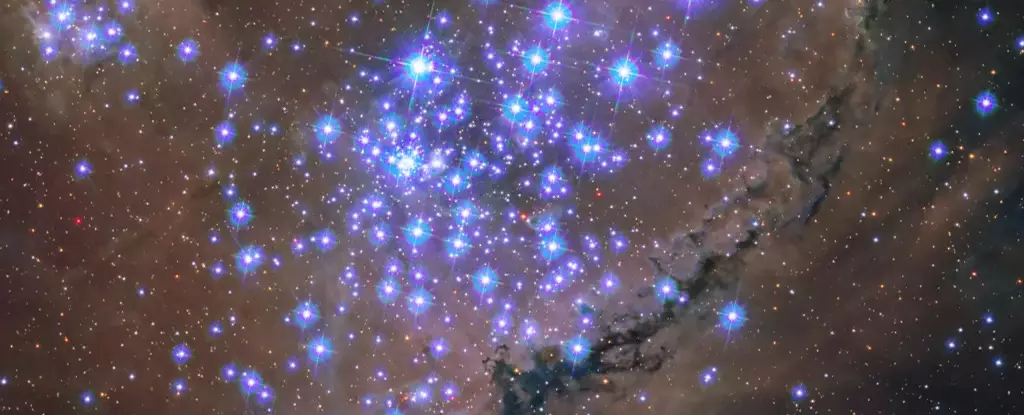Located just outside the Milky Way Galaxy, approximately 210,000 light-years away from Earth, lies the Small Magellanic Cloud (SMC). This dwarf galaxy, along with its counterpart the Large Magellanic Cloud (LMC), orbits the Milky Way as satellite galaxies. Scientists are intrigued by these satellites as they offer valuable insights into star formation and galaxy evolution through mergers.
One of the most fascinating features of the SMC is the breathtaking star cluster known as NGC 346. Situated near the center of the brightest star-forming region in the SMC, this cluster is surrounded by the hydrogen-rich nebula designated N66. Recent images captured by NASA’s Hubble Space Telescope provide a unique view of this dynamic and intricate star-forming cluster.
Advanced Imaging Techniques
The Hubble Space Telescope’s sharp resolution and sensitivity to ultraviolet observations have enabled scientists to study NGC 346 in unprecedented detail. By combining ultraviolet and visible light data from Hubble’s Advanced Camera for Surveys (ACS) and Wide Field Camera 3 (WFC3), researchers have gained valuable insights into the star formation processes within the cluster.
Through their observations of NGC 346, scientists hope to enhance their understanding of star formation and the impact it has on the interstellar medium of low-metallicity galaxies like the SMC. These conditions are believed to mirror those of the early Universe, characterized by a scarcity of heavy elements until the emergence of Population III stars and galaxies.
The Legacy of the Hubble Space Telescope
After more than three decades in operation, the Hubble Space Telescope continues to play a crucial role in unraveling the mysteries of the Universe. By studying distant galaxies, star clusters, and nebulae like NGC 346, scientists are piecing together the story of cosmic evolution and the origins of our vast Universe.
The Small Magellanic Cloud and its star cluster NGC 346 offer a glimpse into the cosmic processes of star formation and galaxy evolution. With the aid of advanced telescopes like the Hubble Space Telescope, researchers are uncovering the intricate details of these celestial phenomena, shedding light on the origins and development of our Universe.


Leave a Reply